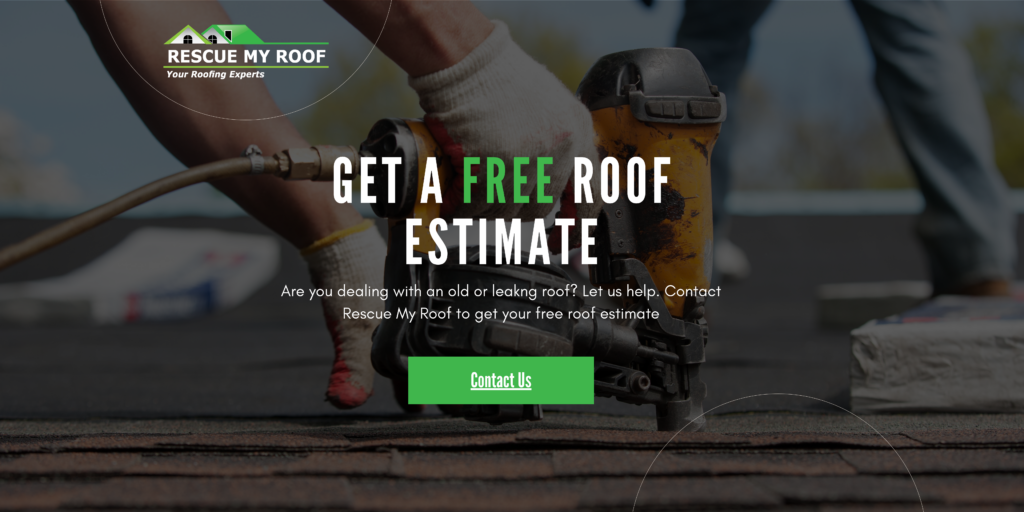The Best Materials for a Low-Slope Roof: A Comprehensive Guide
When it comes to roofing, one size does not fit all. Low-slope roofs, often found on commercial buildings and some modern residential designs, require specific materials to ensure durability, weather resistance, and long-term performance.
Choosing the right roofing material for a low-slope roof can be challenging due to the unique requirements of such systems. But never fear, Rescue My Roof is here to help.
For over a decade, Rescue My Roof has been guiding homeowners through the roofing process, helping them achieve roofs that will last a lifetime. Today, we’re using our expertise to help you determine the best roofing material for your flat roof.
In this article, we’ll explore the best materials for low-slope roofs, their advantages, and considerations for making an informed choice. Ultimately, you’ll know which materials fit best for your project.
What Are Low-Slope Roofs?

Low-slope roofs, also known as flat roofs, have a slope of less than 3:12, meaning they rise less than 3 inches for every 12 inches of horizontal distance. This minimal slope demands materials that can effectively handle water drainage and withstand pooling water, which is more likely on flat surfaces.
Top Materials for Low-Slope Roofs
The traditional asphalt shingles typically don’t work for asphalt roofs, but there are other alternatives. Here’s a breakdown of flat roofing materials and their characteristics to give you an overview of all the products suitable for low-slope roofs.
1. Single-Ply Membranes
Single-ply roofing membranes are flat roofing materials made of sheets of elastomeric compounds, or synthetic rubber, and other binding agents. They are a popular choice for fast-track construction projects because they are lightweight and cost-effective, and can be used on roofs of all shapes and sizes.
Single-ply membranes are also ideal for low-slope roofs because they have fewer seams than other roofing systems and don’t require hot asphalt or torches for installation. Here are a few single-ply roofing options:
EPDM (Ethylene Propylene Diene Monomer)
- Description: EPDM is a synthetic rubber membrane known for its durability and flexibility.
- Advantages: Resistant to UV radiation, ozone, and extreme weather conditions. Easy to install and repair.
- Considerations: Black EPDM can absorb heat, potentially raising cooling costs. White EPDM is available for better energy efficiency.
TPO (Thermoplastic Olefin)
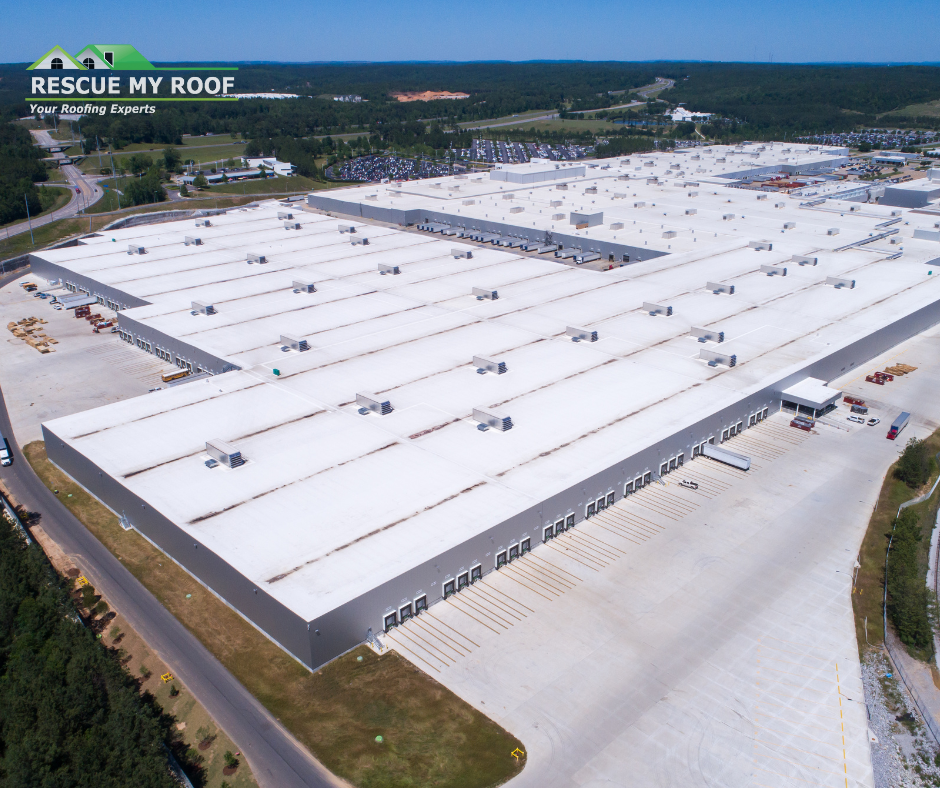
- Description: TPO is a single-ply roofing membrane that combines the durability of EPDM with the heat-weldable seams of PVC.
- Advantages: Energy-efficient, reflective surface. Resistant to UV radiation, chemical exposure, and punctures.
- Considerations: Quality can vary between manufacturers, so it’s essential to choose a reputable brand.
PVC (Polyvinyl Chloride)
- Description: PVC is a durable, plastic-based membrane known for its strength and longevity.
- Advantages: Excellent resistance to chemicals, fire, and punctures. Reflective surface reduces energy costs.
- Considerations: Higher cost compared to EPDM and TPO. Can shrink over time if not properly installed.
2. Built-Up Roofing (BUR)
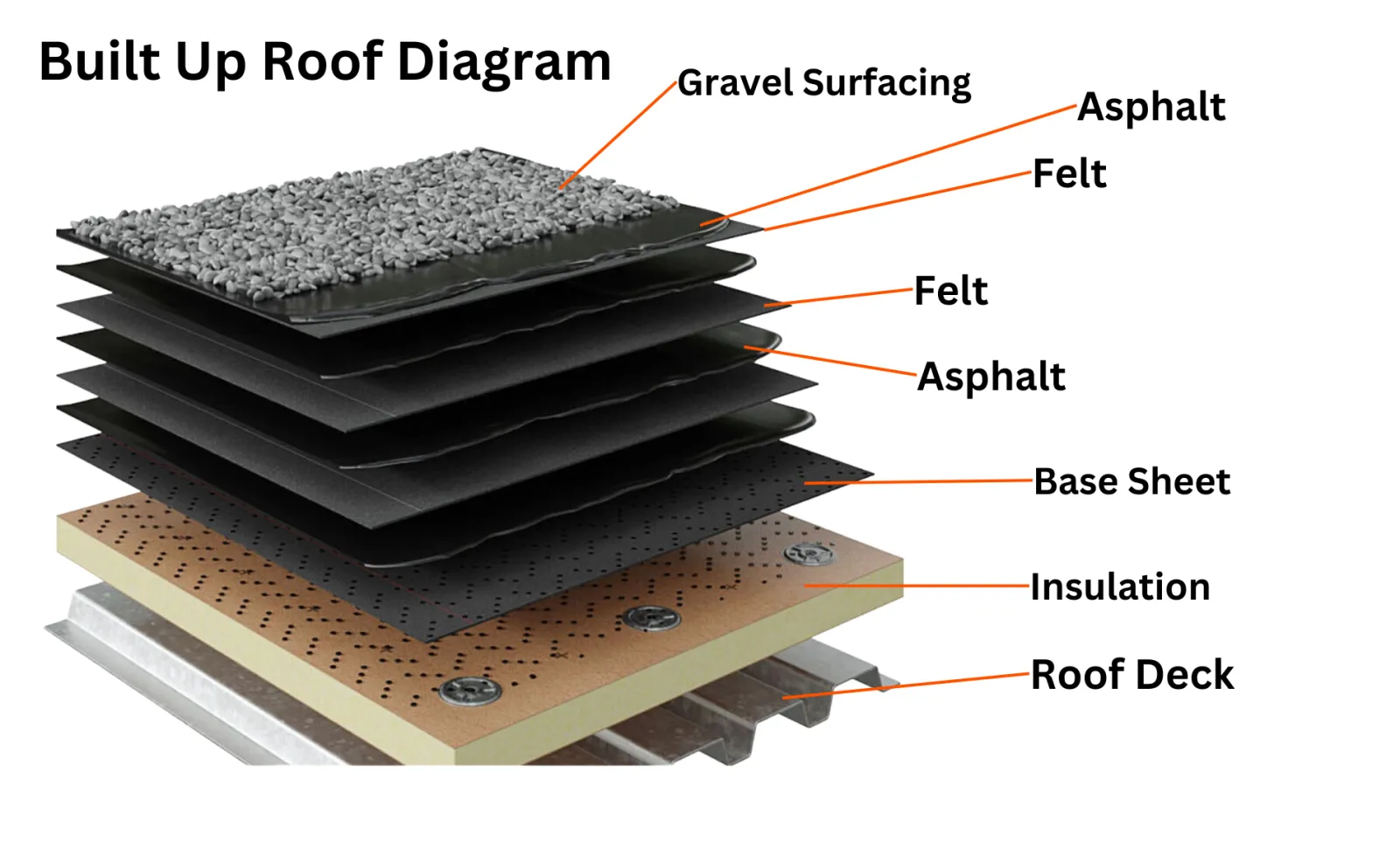
- Description: BUR is a traditional roofing method that involves multiple layers of bitumen and reinforcing fabrics.
- Advantages: Proven durability with excellent resistance to weathering. Multiple layers provide added protection and longevity.
- Considerations: Heavier and more labor-intensive to install. Can be more expensive due to material and labor costs.
3. Modified Bitumen
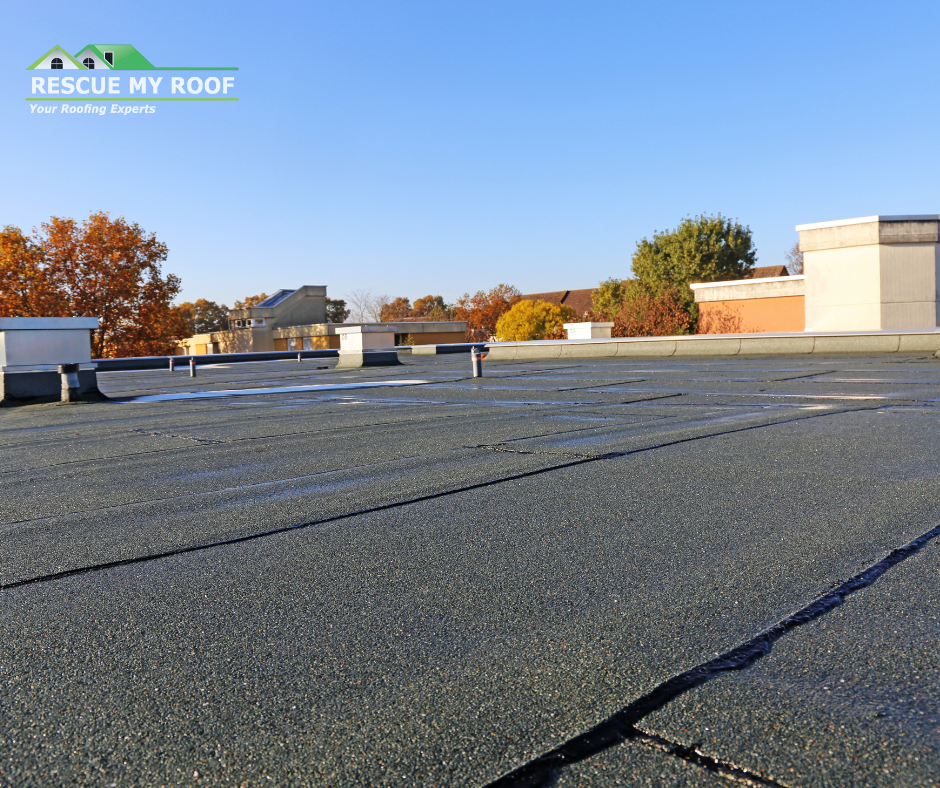
- Description: Modified bitumen is an evolution of BUR, using asphalt combined with modifiers like rubber or plastic to enhance performance.
- Advantages: Flexible and resistant to extreme weather conditions. Available in self-adhering, torch-applied, and cold-applied varieties.
- Considerations: Requires professional installation to ensure proper adhesion and performance.
4. Metal Roofing
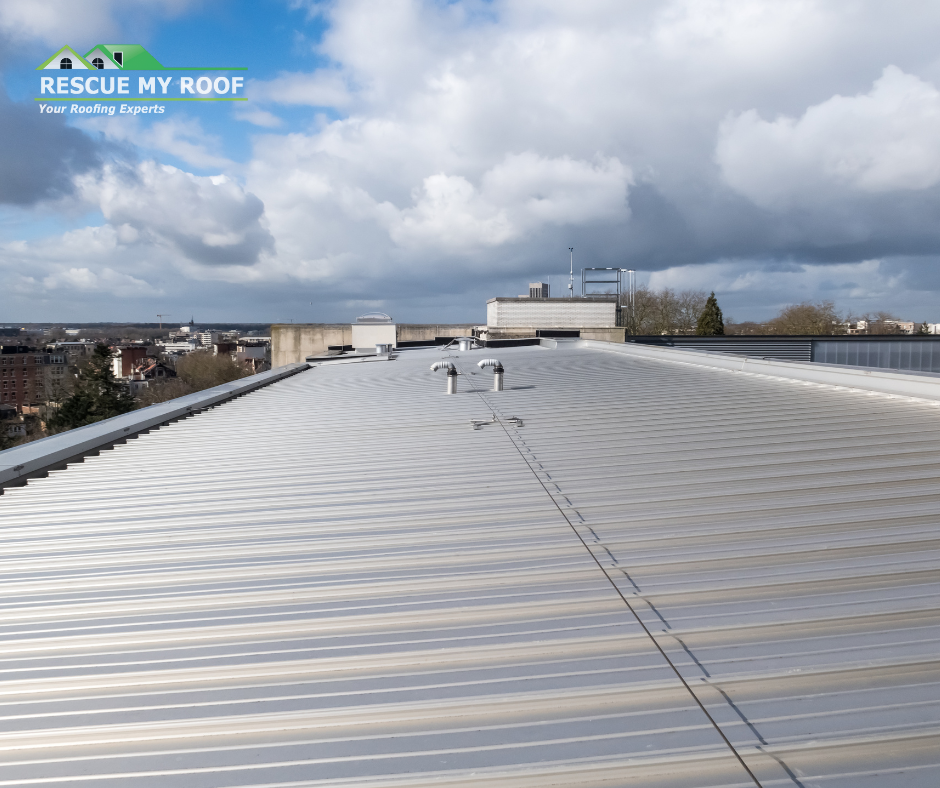
- Description: Metal roofing systems, often made of steel or aluminum, can be used on low-slope roofs with the appropriate design.
- Advantages: Long-lasting and highly durable. Reflective surface reduces energy costs. Low maintenance.
- Considerations: Higher initial cost. Proper installation is critical to prevent leaks.
Factors to Consider When Choosing a Low-Slope Roofing Material
Not all low-slope roofing materials are made equally. Homeowners should consider the following factors when choosing their materials:
- Climate and Weather Conditions – Consider the local climate and weather patterns. Some materials perform better in specific environments, such as hot, sunny areas or regions with heavy rainfall.
- Building Use and Design – The intended use of the building (residential vs. commercial) and its architectural design can influence material choice. Commercial buildings may prioritize durability and low maintenance, while residential buildings might focus on aesthetics and energy efficiency.
- Budget – While cost should not be the sole factor, it is an essential consideration. Evaluate both the initial installation costs and long-term maintenance expenses.
- Installation and Maintenance – Some materials require specialized installation techniques and regular maintenance. Ensure you have access to qualified roofing professionals and are prepared for any ongoing upkeep.
- Energy Efficiency – Reflective roofing materials can reduce cooling costs in hot climates. Consider energy-efficient options if lowering utility bills is a priority.
Choosing the Best Material for Your Low-Slope Roof
Selecting the best material for a low-slope roof involves balancing durability, cost, energy efficiency, and specific building needs. By understanding the benefits and considerations of each option, you can make an informed decision that ensures the longevity and performance of your roof.
Whether you opt for single-ply membranes like EPDM, TPO, or PVC, traditional built-up roofing, modified bitumen, or metal roofing, investing in the right material will protect your property and provide peace of mind for years to come.
Learn more about flat roofing with “5 Things You Must Know About Flat Roofs” and “Top 6 Commonly Asked Questions About Flat Roofs.”
Do you need a flat roof installation or repair in southeastern Wisconsin? Rescue My Roof is ready to help. Contact us today to get a free flat roof estimate.


